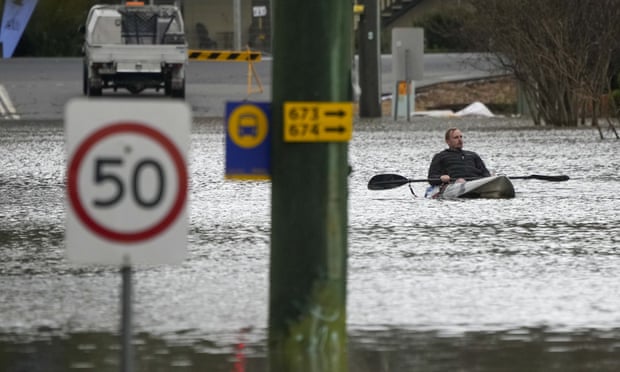https://www.theguardian.com/news/2022/jul/08/la-nina-and-climate-crisis-behind-recent-australia-floods
Weather tracker: La Niña and climate crisis behind recent Australia floods
Warmer conditions around the western Pacific have led to torrential rain and burst rivers

Dangerous and widespread flooding has been widely reported over the past week in eastern parts of Australia, particularly New South Wales. Tens of thousands of people have been forced from their homes after incessant torrential rain led to significant flooding from burst rivers.
The central Pacific Ocean is currently in a weakening “La Niña” state, whereby sea surface temperatures in the eastern Pacific are lower than normal, while in the western Pacific, particularly around Indonesia and eastern Australia, they are warmer than normal. This increased warmth in the latter raises moisture content and tends to lead to wetter conditions. This has been the driver for the huge volumes of rain witnessed over the past few days, generated by a series of Pacific storms.
Sydney and surrounding regions have been particularly hard hit, and some areas have received 700-800mm of rain since the weekend. This is about one and a half times the average annual rainfall in this area.
More than 80,000 people have been forcibly evacuated by rising flood water, and it is the third time this year that the same regions have endured flooding. Although La Niña has been the major driver for this phenomenon, the severe characteristics of this event are also in keeping with climate breakdown predictions, which support the enhanced intensity of seasonal global rainfall events.
It has been very warm across parts of northern Canada and Alaska over the past few days, as heat and moisture were pumped up from a long way south and west. Maximum temperatures close to the north coast of Alaska, well within the Arctic Circle, soared beyond 30C, 10C or more above the seasonal peak. The warmth, coupled with dry vegetation, has led to numerous grassland fires which, in some cases, were triggered by lightning strikes. Thunderstorms in this region are relatively unusual, given the high latitude, but warmth and moisture in the atmosphere have combined to produce daily thunderstorms over the past week.


No comments:
Post a Comment